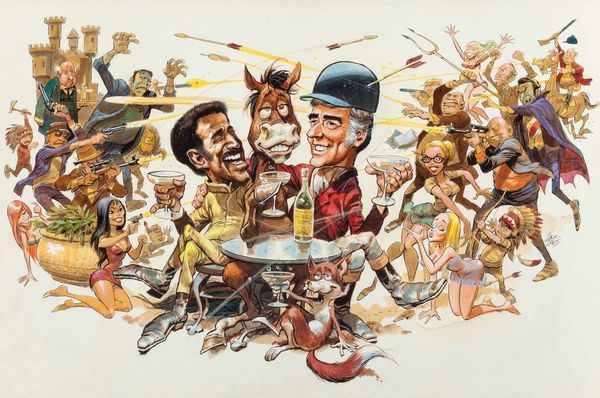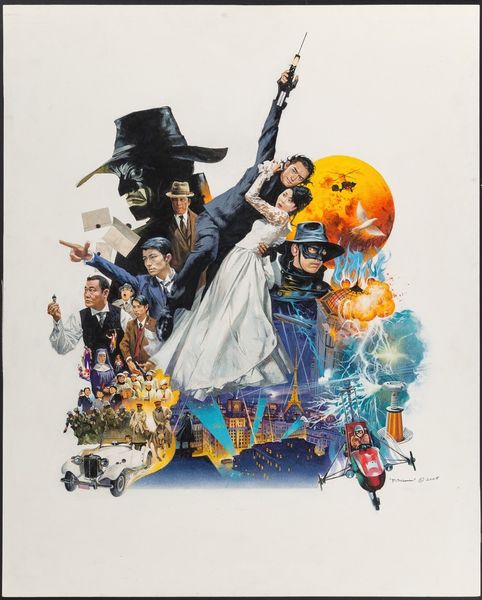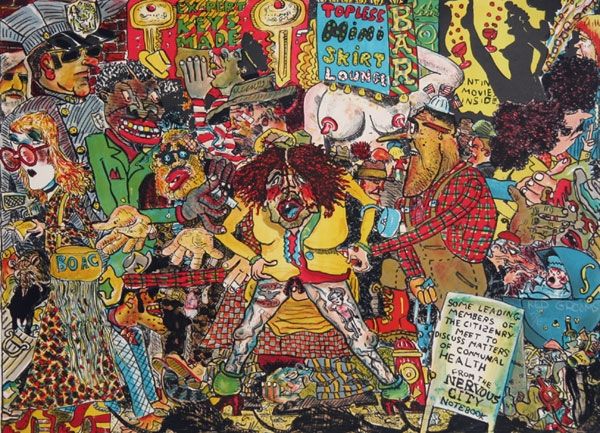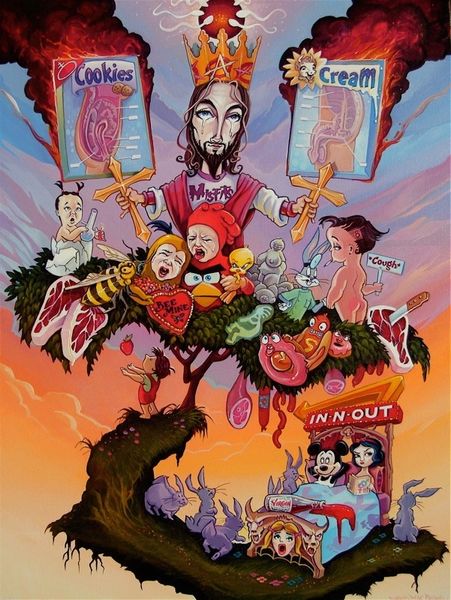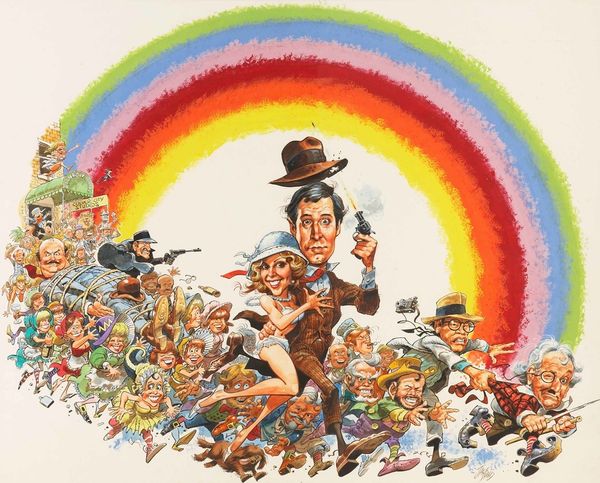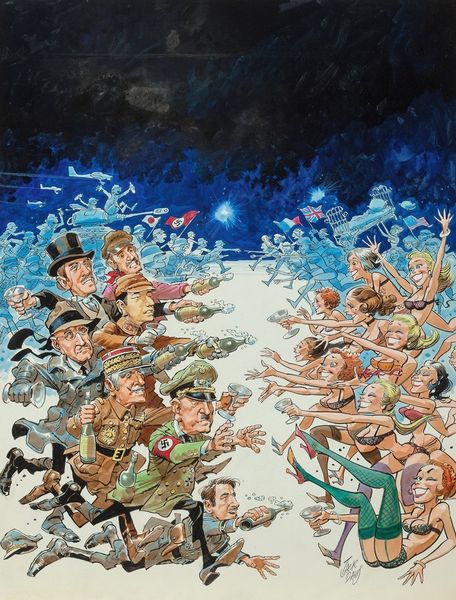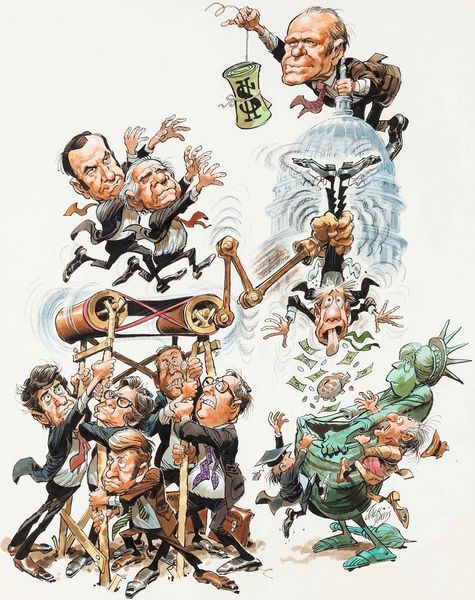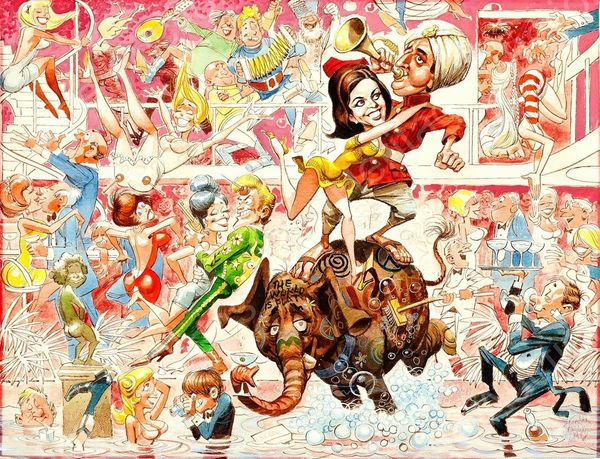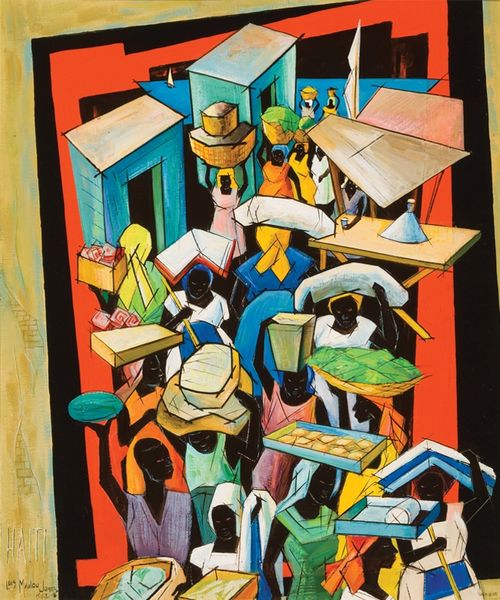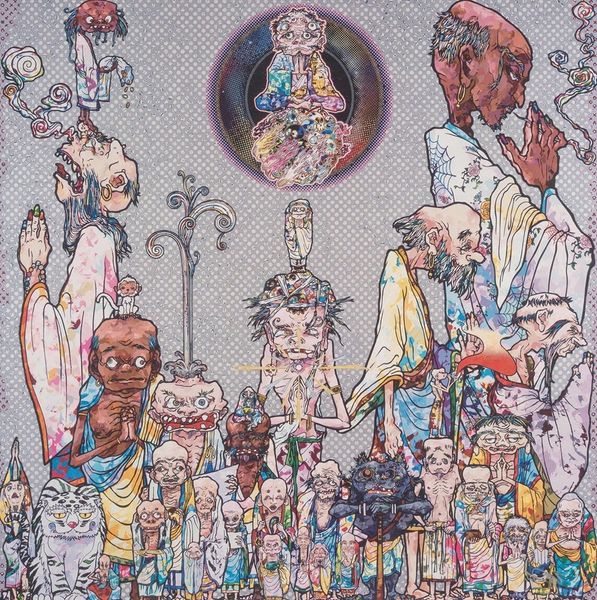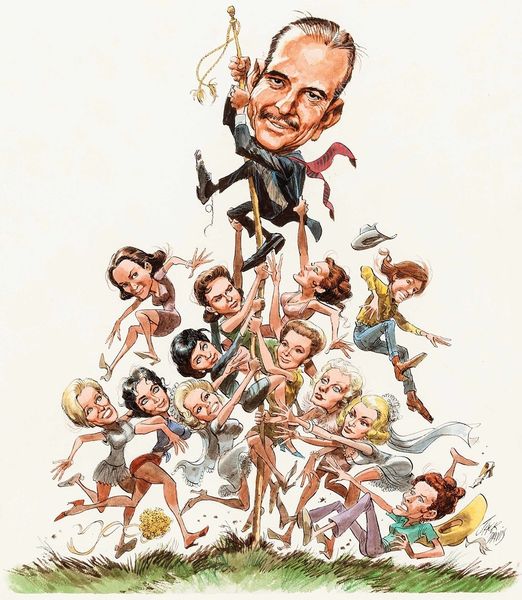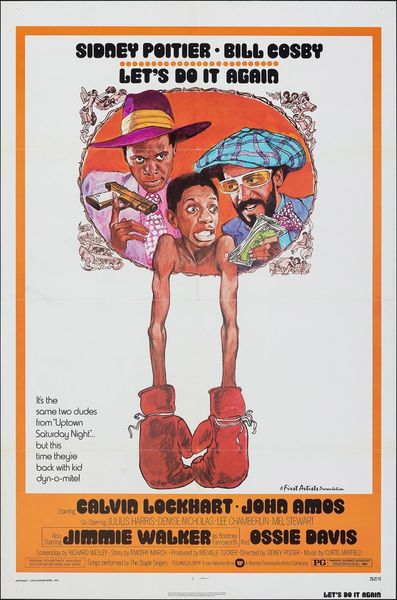
drawing, watercolor, ink
#
african-art
#
drawing
#
contemporary
#
narrative-art
#
caricature
#
figuration
#
social-realism
#
watercolor
#
ink
#
watercolour illustration
#
mixed media
#
watercolor
Copyright: Modern Artists: Artvee
Editor: So, this is *Five on the Black Hand Side*, a 1973 watercolor and ink drawing by Jack Davis. The energy just jumps out at you, doesn’t it? What do you see in this piece? Curator: I see a vibrant intersection of cultural commentary and artistic expression deeply rooted in the Black Arts Movement. Davis seems to be tackling issues of Black identity, resistance, and community through caricature and social realism. Notice how the central figure, a bourgeois Black man, is juxtaposed against a backdrop of an energetic crowd, likely representing a community uprising or celebration. What might this contrast suggest about class dynamics within the Black community during the 1970s? Editor: It almost feels like he's caught between two worlds. He's in a suit, carrying a briefcase, but he's surrounded by all this… energy and activism. Is the “Black Hand Side” a reference to something specific? Curator: It is. It refers to the 1973 play and film of the same name. Understanding the play is key, as it uses humor to address serious themes about Black liberation. Consider the time period – the Civil Rights Movement was recent history, and Black artists were grappling with how to represent identity, and continuing struggles in their work. What’s fascinating here is how Davis uses caricature, a historically fraught visual language often used to denigrate, and seems to be subverting it, using it instead for cultural critique. How do you interpret that decision? Editor: That’s really interesting. I hadn't considered the choice of caricature in that light. Maybe it’s about reclaiming a derogatory visual language? Curator: Precisely. By imbuing these caricatures with agency and emotion, Davis participates in the reclamation of Black representation, contributing to the wider discourse of identity and resistance. Editor: I definitely see it now. This image is more complex than I initially thought, there are layers of meaning embedded in the historical context. Curator: Exactly! By connecting the art to the historical and cultural narratives from which it comes we’re more able to recognize its meaning, and engage with it on a much deeper level.
Comments
No comments
Be the first to comment and join the conversation on the ultimate creative platform.
